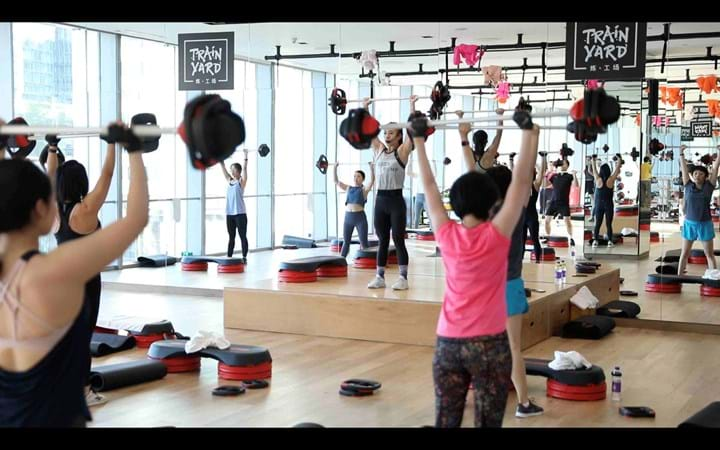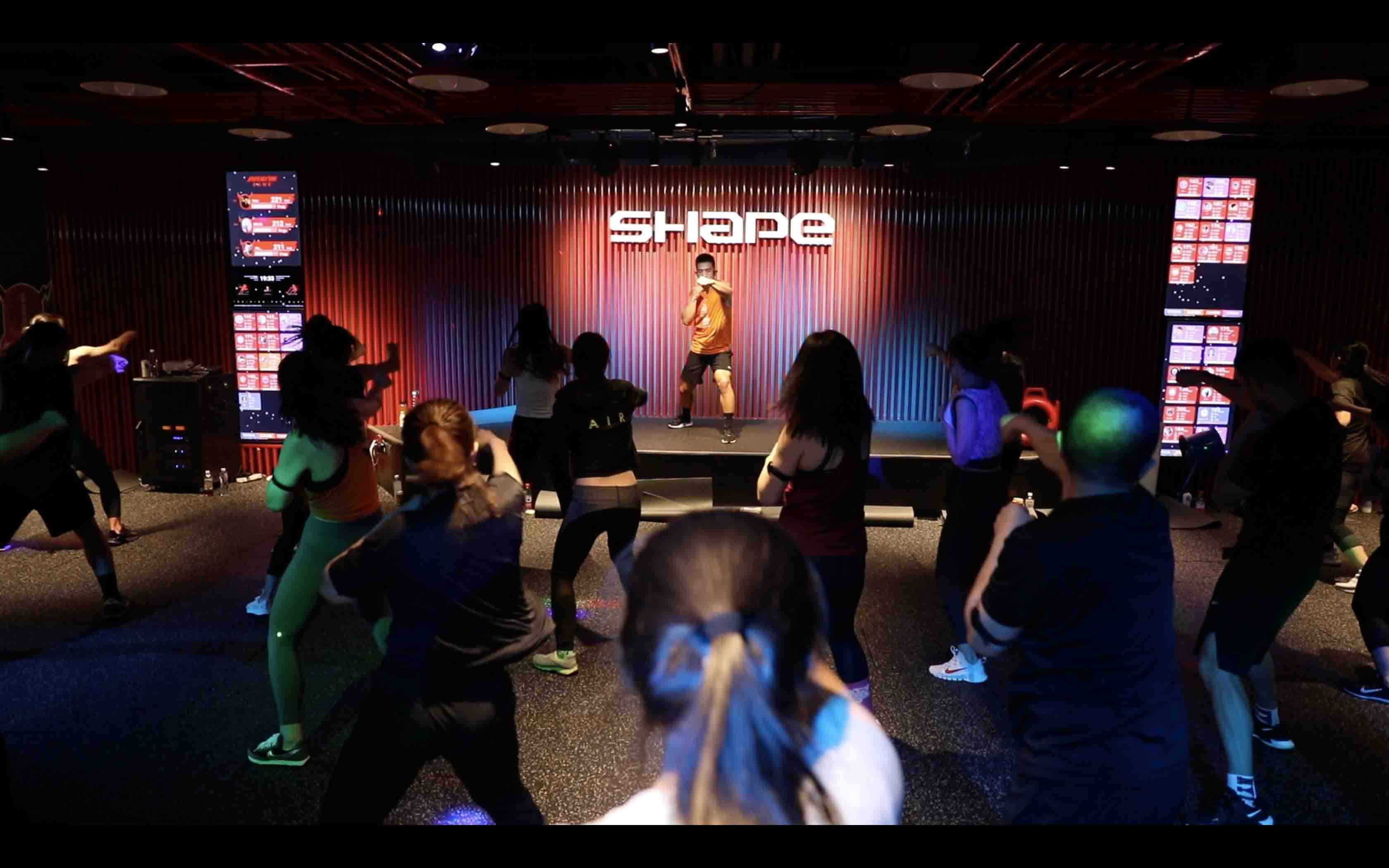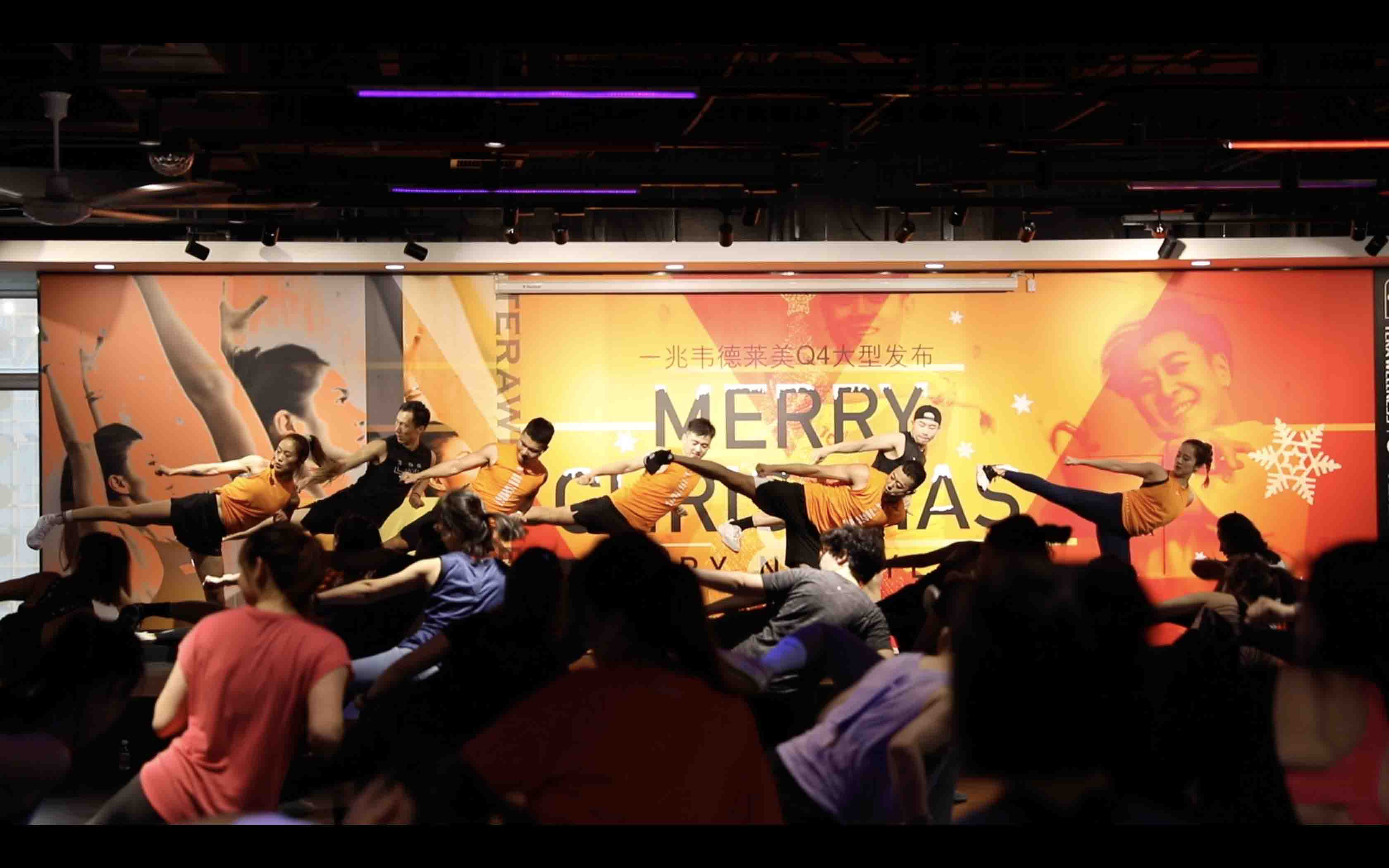
In Chinese, the word ‘crisis’ can mean both danger and opportunity. So when COVID-19 struck China at the start of 2020, some clubs saw risk, while others spotted the chance to reinvent themselves.
Having been the first country to suffer the debilitating effects of COVID-19 – and without the benefit of best-practice learnings from other markets – Chinese businesses were plunged completely into the unknown.
Across every industry, COVID-19 forced businesses to find their way through the dark and completely rethink their go-to-market strategy. For the Chinese clubs that I work with as CEO of Les Mills China (1,400 facilities), this meant ripping up the rule book and using COVID-19 as the catalyst for a new approach to meeting people’s fitness needs.
Necessity was well and truly the mother of invention. with operators who previously relied entirely on member fees for revenue being forced to revise their strategies. And since leaving lockdown in May, these clubs have emerged with complementary digital channels, greater efficiencies, plus fresh opportunities to grow their revenue and customer base.
So how have these clubs bounced back stronger since the pandemic? And what can the rest of the fitness world learn from their actions? Here are nine insights into what clubs can expect post-COVID, and the crisis-proof tactics for dodging danger and embracing opportunity.

1. Green shoots of recovery begin to blossom
With health becoming everyone’s top priority, there are significant growth opportunities for clubs as their markets emerge from the pandemic and return to full capacity.
Six months on from lockdown, Chinese clubs are back to between 80-120 percent of their pre-COVID membership levels. As China heads into the 2021 high season, we’re expecting to see substantial club growth, driven by reinvigorated consumer demand for live fitness experiences and healthier lifestyles.
There's new-found optimism in China, but the legacy of COVID still looms large. Eager to avoid any second waves, the Chinese government maintains a robust system of tracking and hygiene measures to keep the virus in check. This includes temperature checks at clubs entrances, while members must use the track and trace app to gain access to their club, or pretty much any public building. Initially masks needed to be worn while members were working out, but this has been gradually phased out.
2. Digital drives growth of the club market
Another legacy of lockdown is that clubs are leveraging their enlarged digital footprints to drive more consumers into their facilities. With a population of 1.4bn people and a gym penetration rate of less than three percent, there are plenty of people for them to target in China.
The online to offline (O2O) business model – where businesses build an audience through a slick digital presence and then channel them towards physical sites – is highly popular in China thanks to the ubiquity of WeChat, which facilitates the majority of consumer transactions.
Operators such as Super Monkey, Shape and Lefit are among the leading proponents of O2O, with social media-centric strategies that build huge consumer reach and create a journey that ultimately converts new fans into club members/patrons. Online workouts have proved to be an effective way to accelerate consumers’ consideration journey, with the prospect of thrilling live workouts and greater motivation proving an effective end goal for pulling these prospects into clubs.
The ultimate post-COVID winners have been the clubs who have nailed O2O to ensure they have both physical and digital fitness bases covered. For these clubs, the distinctions between physical and digital no longer exist – digital has simply become an integral part of their standard operating procedure.

3. ‘Go hard and leave home’ is the new member mindset
One of the main concerns among club operators was that the growth of digital would come at the expense of club visits, with more members opting to work-out at home, but this proved to be anything but the case.
Attendance rates are up by 30 percent or more (on pre-COVID levels) in many clubs, as members make up for lost time. While some are driven by the need to shed their excess pandemic pounds, many are simply showing renewed appreciation for their gym and a determination to train harder and lift heavier weights.
This mentality meant group fitness recovered quickly, with members cherishing the community aspect, as well as the chance to be challenged by live Instructors in a way that home workouts can’t quite match.
Coming out of lockdown, clubs started with group cycling programs because the bikes ensure people are fixed in position, with adequate space for social distancing. Classes like BODYPUMP™ and CXWORX™ also came back quickly as there isn’t any need for participants to move from their station. And since restrictions have eased, higher intensity classes like BODYCOMBAT™ and LES MILLS GRIT™ have been back with a bang as the new member mindset drives an appetite for tough classes that push them to the limit and deliver results.
4. Reinventing the club space
Seeking to capitalize on this boom in group fitness and create a more profitable floor space, clubs have started to refurbish and increase their studio space.
For some clubs, this means a redesign of their existing premises, while others are upping sticks and moving to new locations in a bid to keep up with new density patterns as more people swap the office for home working.
COVID brought major cash flow challenges for many operators, but as conditions have improved, we’re seeing a growing number of operators invest in their studios. Many have identified an opportunity to drive extra revenue from boutique-style studio concepts within their existing club space.
There’s also a trend towards more virtual studios being created, as clubs seek to expand their group fitness timetables, while optimizing costs and maintaining class quality. At the flagship Pure Fitness club in Shanghai’s swanky IAPM Mall, virtual classes were launched in August and now account for nearly 20 percent of the group fitness timetable. The move towards broader timetables comes as members take advantage of their home-working flexibility to visit the club in off-peak times.

5. Race to the top
Despite the economic headwinds of COVID bringing a chill to consumer spending levels, this has not sparked a price war and race to the bottom among clubs. In fact, clubs are now placing greater emphasis on differentiating through the quality of their member experience.
Competitive pricing forms part of this, but most of the focus is on optimizing the user experience through better service, longer opening hours, better programming and classy decor. This is in marked contrast to the recent past, where the emphasis among Chinese operators was very much on driving quick growth. Traditionally, Chinese clubs have always sold year-long memberships with payment up-front, whereas Will’s Fitness (operator of 170 premium clubs in China) recently sparked a paradigm shift by offering monthly memberships without any contracts. We expect many more operators to follow suit.
There are several factors at play here. Operators recognize the importance of striking while the health and fitness iron is hot to remove barriers and make it more enticing for people to join a club. Another driver is stricter regulation from the Chinese government, which has brought in a range of measures to improve consumer rights – such as a 10-day ‘cooling-off period’ where purchasers are entitled to an automatic refund. This is designed to prevent the pressure selling and dubious marketing practices that have dogged Chinese clubs’ reputation in the past.
As such, member experience and onboarding have taken on far greater significance, with retention and member lifetime value supplanting new member sales as the most important metrics for successful clubs.
6. Instructor standards soar
Another macro trend we’ve seen is the pandemic proving the catalyst for substantial life changes across the whole population. Millions have moved cities, changed jobs and reassessed what’s truly important to them. This is particularly true of group fitness Instructors.
Clubs too, have been reassessing their priorities, prompting a monumental shuffling of the pack among club staff. High-quality Instructors are more in demand (and better paid) than ever, while lesser performers now find themselves contemplating new careers. Refreshingly, it’s not so much a case of ‘old versus new’ among Instructors, more ‘good versus bad’, with the resultant meritocracy helping to drive up standards. This in turn brings more benefits to clubs, with better Instructors helping them to attract more members and keep them for longer.
The pandemic turbo-charged the social media profiles of top-class Instructors, bringing them greater reach than ever and legions of new followers to help them demonstrate their value to clubs.
Lockdown also brought an unprecedented opportunity for Instructors to upskill and sharpen their abilities, meaning those hungry for success were able to put the extra work in and distinguish themselves from the rest of the pack.
Nowhere was this more obvious than in the Les Mills THE ONE 2020 competition, where 400 of China’s top Instructors went head-to-head in an online group fitness contest, with more than one million consumers tuning in to see who would be crowned THE ONE. Those Instructors who were willing to put in the work and prevail through a tough process were rewarded with mass exposure among the fitness sector’s leading lights and significantly enlarged social media followings.

7. Staycations put hotel gyms in the spotlight
An unlikely star of the post-COVID fitness resurgence has been hotel gyms. These are premium facilities that are far more expensive than mainstream clubs at base price, but they’re also able to charge a 30 percent extra premium for the inclusion of group fitness in membership packages.
Hotel-based clubs are winning members as they’re perceived to be cleaner and safer environments than mainstream gyms. Much of this comes down to the international hotel brand names they operate under, which are seen by Chinese consumers as a beacon of prestige and trustworthiness.
Another surprising reason for the hotel gym boom has been the prominence of fitness-themed staycations since the country came out of lockdown. Chinese people love to travel, so with the borders closed and flights limited, they’ve been forced to stay closer to home and travel by train to nearby cities for their holidays.
Hotel gyms have been quick to capitalize – offering fitness-themed getaways where guests enjoy a series of workouts across the hotel gym. The Instructors then double up as tour guides who lead them on trips around the city. With fitness more popular than ever and staycations a likely feature for other markets as well, there’s every chance we’ll see this trend take off in other countries in 2021.
8. Mental health makes more of a mark
When COVID-19 sent China into lockdown, it wasn't just germs endangering our health. The pandemic also infiltrated society by sparking high levels of stress and anxiety, and no one was immune. Multiple Chinese studies found people were experiencing high levels of stress, anxiety, and post-traumatic stress disorder. One study showed up to half were dealing with serious signs of depression, while another said 35 percent of people were struggling with anxiety.
Since emerging from lockdown, operators have reported a concerted consumer shift towards exercising for the mental health benefits as much as the physical. Combat programs are pulling in members keen to kick and punch away their stress, while yoga classes are teeming with participants seeking balance, serenity and better quality sleep. Overall, it speaks to a better-informed class of consumer. In the past, people felt good from exercise without necessarily knowing why, whereas the post-COVID fitness member knows exactly what they want from a workout and the best way to get it.
For clubs, marketing the efficacy and scientifically-proven results your workouts bring will place you in the box seat – particularly in a world of wearables and trackers, where every health metric can be quantified. Demonstrate the specific health benefits you can bring to members and you’ll never be short of them.
9. Investing in our future
COVID didn’t just shock adults into taking their health more seriously – kids’ activity levels have also come into focus. Where once Chinese children were measured purely on their academic abilities, schools are now placing greater emphasis on their athletic abilities as well, with physical literacy forming a key part of the entrance exams for 14-year-olds starting high school.
The Chinese government has prioritized physical activity in schools and this is being ingrained right from Kindergarten, with programs like BORN TO MOVE™ proving popular with kids in school, as well as with their families at home.
Clubs are also stepping up to meet this need with a growing number of family membership packages and programs aimed at kids, such as classes and basketball camps. There’s an immediate opportunity for operators to provide family packages, as well as the chance to build a pipeline of future members by setting up kids with active habits that they can carry forward into adulthood.
READY TO DOUBLE DOWN ON DIGITAL FITNESS?
We’ve worked closely with leading clubs around the world to develop a suite of new digital solutions to help future-proof clubs by expanding their reach in the booming online fitness space.
GET FIT FOR THE FUTURE